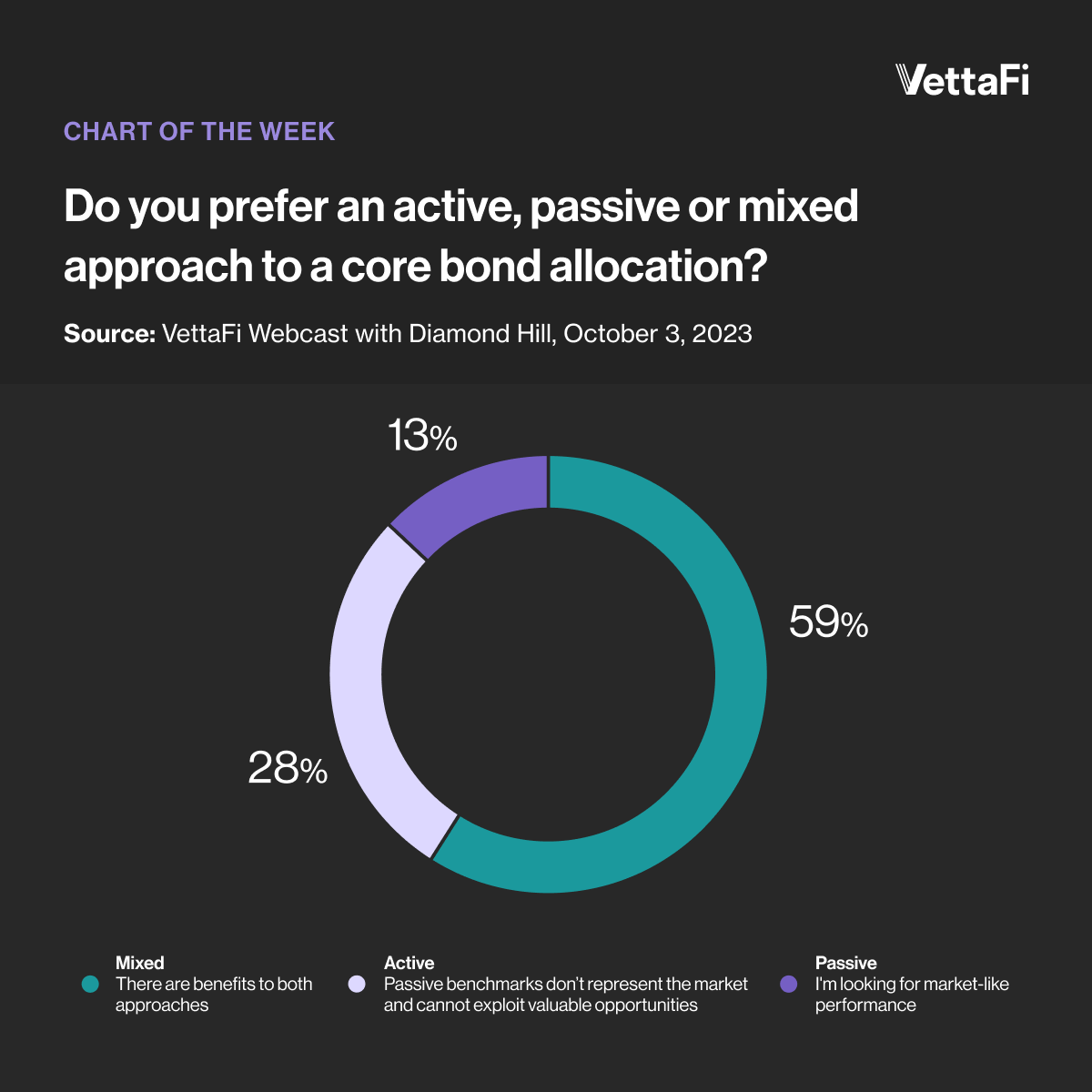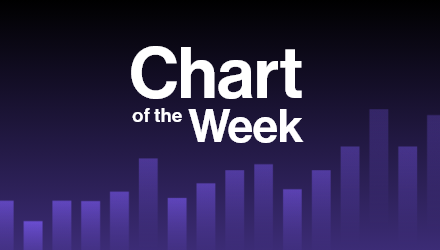Bond ETFs represent approximately 20% of the industry assets. Yet they have gathered more than 40% share of the net inflows in the first nine months of 2023. There has been demand for both active and traditional passive fixed income strategies.
During a webcast with Diamond Hill in early October, we asked advisors a key question: “Do you prefer an active, passive, or mixed approach to a core bond allocation?” When choosing between active and passive, active won, with 28% of the vote versus 13% for passive. However, most respondents (59%) chose a mixed approach, believing there are benefits to both.  We did not ask the attendees what benefits they saw as benefits to each approach. But let’s discuss what some of them might be.
We did not ask the attendees what benefits they saw as benefits to each approach. But let’s discuss what some of them might be.
Benefits of Passive Core Bond Funds
Advisors have increasingly turned to core bond ETFs like the Vanguard Total Bond Index ETF (BND) and the iShares Core Aggregate Bond ETF (AGG). In the past year, BND and AGG added $17 billion and $15 billion of new money to boost the asset bases to $94 billion and $89 billion, respectively.
Both ETFs have minuscule net expense ratios of 0.03%. That is well below the 0.82% fee for the average bond mutual fund according to the Investment Company Institute. AGG and BND provide broad market exposure to US government bonds and high-quality investment grade securities. With yields of 5% and an average duration of 6 years, these two funds can easily serve as the base of a traditional 60/40 portfolio. AGG and BND have strong income and capital preservation attributes.
Some advisors might prefer to include higher-yielding bonds in their core strategy via a passive approach. The iShares Core Total USD Bond Market ETF (IUSB) is a worthy candidate. The fund has a 0.06% expense ratio and has 7% of assets in noninvestment-grade bonds. The remainder of the assets are invested in investment-grade corporate and government bonds.
Benefits of Active Core Bond Funds
Many advisors have long turned to active mutual funds. That is because they find the bond market challenging to navigate on their own. There are many questions to be answered: Should they take on additional interest rate risk, believing the Fed is likely to keep rates steady in 2023 before lowering them in 2024? Or should they take a more conservative approach given the strong jobs report last week?
What about credit risk? Is a high-quality approach focused on investment-grade corporates most appropriate? Are the best opportunities in the high-yield corporate market or perhaps outside of the U.S.?
Actively managed mutual funds and ETFs take the decision-making process away from a busy advisor and put them in the hands of the hopefully skilled professionals. This outsourcing also comes with a higher fee than a passive approach.
A Closer Look at Fidelity’s Bond Fund Offerings
The Fidelity Total Bond Fund (FTBFX) is a $31 billion actively managed mutual fund. In the three-year period ended September 2023, FTBFX declined 3.8% on an annualized total return basis. This loss was 140 basis points less than AGG and BND. While IUSB held up better, it was still down 5.1%.
In 2023, FTBFX has focused on higher-yielding sectors. These include high-yield corporate bonds, emerging markets, and leveraged loans, while underweighting industrial sector investment-grade corporate bonds. In addition, the fund’s duration was lower than the index-based strategies.
While FTBFX’s 0.45% net expense ratio is relatively low for a mutual fund, it is high compared to AGG, BND, and IUSB. Its cousin is the Fidelity Total Bond ETF (FBND), which is run independently and not as a share class of FTBFX. The $5.2 billion FBND is run by the same management team as FTBFX, and uses the same approach. This ETF charges a more modest 0.25% fee.
A Wide Range of Active Bond ETFs to Choose From
Other actively managed core or core-plus-bond ETFs from established mutual fund companies include the Capital Group Core Bond ETF (CGCB), the JPMorgan Core Plus Bond ETF (JCPB), the PIMCO Active Bond ETF (BOND), the T. Rowe Price Total Return ETF (TOTR), and the VictoryShares Core Intermediate Bond ETF (UITB). Meanwhile, Vanguard plans to launch the Vanguard Core Bond ETF (VCRB), an actively managed ETF that can complement BND, later this year.
For advisors considering active management, either as the sole core or paired together with a passive approach, there are many ETFs to choose from. We plan to talk about the benefits of active management in the income space at the VettaFi Income Strategy Symposium on October 27. Register to join us.
For more news, information, and analysis, visit VettaFi | ETF Trends.

